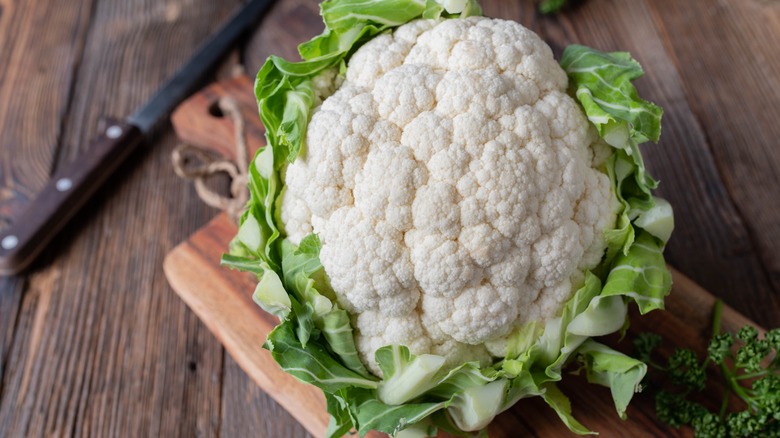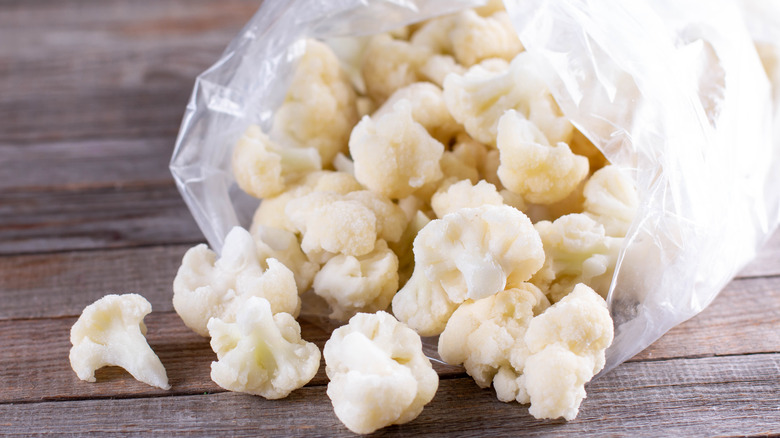Can You Store A Whole Cauliflower In The Freezer?
Cauliflower is one of those veggies that's difficult to use all at once, and if you have more than you can handle, it's tempting to just pop the whole head straight into the freezer. There's nothing stopping you from doing this, but just because you can doesn't mean that it's necessarily the best thing to do. For one, think about how bulky a whole cauliflower can be, and just how much precious freezer space its awkward shape will occupy. Breaking it into smaller florets will make the vegetable that much more convenient to store.
Unless you plan to cook with a whole cauliflower and roast it in one piece, it's also easier to break it into smaller florets before freezing versus afterwards, when it will be rock solid. Moreover, doing so gives you the option of freezing it in smaller, single-serve portions. That way, you won't have to thaw a whole cauliflower when you only want to cook a handful (and refreeze the rest). Refreezing foods can be tricky and might negatively change the texture and flavor of the vegetable if you aren't careful — it's a food storage mistake you need to stop making. Plus, dividing this dense veggie will also give it a more even freezing job.
Needless to say, there are plenty of reasons why it makes more sense to slice the cauliflower into bite-sized pieces. However, don't put them in the freezer just yet: There is one more vital step to take, and that's blanching.
How to freeze cauliflower
Cauliflower might seem like a dry and brittle vegetable, but it has a very high water content — a whopping 92%, which is the same as watermelon. If it isn't blanched, this moisture will make the frozen vegetable turn mushy when it is cooked. Additionally, blanching can also kill any bacteria that may be hiding inside the cauliflower's nooks and crevices, as well as better preserve its flavor and nutritional value.
To blanch it, begin by breaking the cauliflower into florets, discarding any that feel limp and soggy or have brown spots on them. Rinse the florets under running water to get rid of dirt, then plunk them in a pot of boiling water for one to two minutes. Remove the florets and plunge them into ice water for another minute or two. Dry them off thoroughly, and your blanched cauliflower is ready for freezing.
The next step is to line up the florets on a tray (making sure none are touching) and freeze them individually first. This will prevent the pieces from sticking together into large lumps. Once they look frozen solid, transfer the florets into an airtight bag and keep them in there until it's time to cook. Frozen this way, cauliflower will stay fresh for anywhere between eight months to a year. The best part is that frozen florets don't necessarily need to be thawed before cooking, either, so you can add them straight to recipes like this silky cauliflower cheddar soup.


